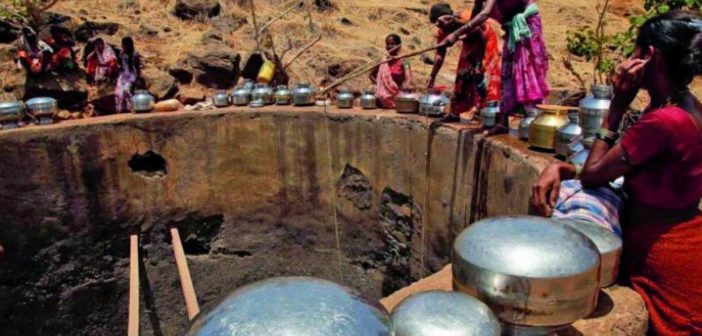India’s groundwater resources are assessed periodically through a collaborative effort between State Ground Water Departments and the Central Ground Water Board, guided by state-level committees and overseen by the Central Level Expert Group. Compared to the 2023 Assessment, total annual groundwater recharge has slightly declined from a record 449.08 in 2023 bcm to 446.90 bcm in 2024 while extraction increased from 241.34 bcm in 2023 to 245.64 bcm in 2024.
India’s groundwater resources are assessed periodically through a collaborative effort between State Ground Water Departments and the Central Ground Water Board, guided by state-level committees and overseen by the Central Level Expert Group (CLEG). These assessments have been conducted since 1980, with annual evaluations starting in 2022. The National Compilation on Dynamic Groundwater Resources of India 2024 (GWRA-2024) continues this effort, offering critical insights into groundwater availability, recharge, and extraction. This data serves as the foundation for sustainable groundwater management strategies across the country.
In today’s story, we examine trends in groundwater availability, recharge, and extraction. This serves as an update to our previous analyses, which you can read here and here.
Find all the data on the assessment of groundwater resources in India on Dataful.
Note: Assessments before 2017 followed the Ground Water Estimation Committee (GEC) 1997 methodology, while those from 2017 onward adhere to the GEC 2015 guidelines. Caution is needed when comparing trends over time, as there is a change in methodology.
Further, the India-Groundwater Resource Estimation System (IN-GRES) is a web-based application developed by CGWB in collaboration with IIT Hyderabad to standardize groundwater resource assessments across Central and State Governments. First used in 2020, IN-GRES is a GIS-based platform that facilitates both assessment and dissemination of groundwater data.
Annual Ground Water Recharge declined marginally in 2024, while extraction higher than 2020 levels
Compared to the 2023 Dynamic Groundwater Resource Assessment, total annual groundwater recharge has slightly declined from a record 449.08 in 2023 bcm to 446.90 bcm in 2024, mainly due to reduced return flow from irrigation. This is close to 2013 levels (447 bcm). Rainfall is the primary source of replenishable groundwater, accounting for about 61% of total annual recharge. India receives an average of 119 cm of rainfall per year, though with significant regional variations, and almost 75% of this rainfall is received in four months during the southwest monsoon season.
Consequently, extractable groundwater resources have also dipped slightly from 407.21 bcm to 406.19 bcm during the same period. Meanwhile, groundwater extraction has increased from 241.34 bcm to 245.64 bcm, nearing 2020 levels (245 bcm). As a result, the stage of groundwater extraction has risen slightly from 59.21% to 60.47%.
‘Safe’ Units Peak, while ‘Over-Exploited’ at Record Low in 2024
Compared to 2023, the total number of assessment units has increased from 6,553 to 6,746. However, this remains lower than the 2022 count of 7,089 and the 2020 count of 6,965. Of the 6746 assessment units, 751 units (11.13%) have been classified as ‘Over-exploited’, where groundwater extraction exceeds the annual recharge. 206 units (3.05%) are ‘Critical’, and 711 units (10.54%) are ‘Semi-critical’. The majority, 4,951 units (73.39%), are categorized as ‘Safe’, with extraction below 70%. In fact, this represents the highest proportion of ‘Safe’ units across all assessments conducted to date, while the share of ‘Over-exploited’ units has reached an all-time low. Additionally, 127 units (1.88%) are classified as ‘Saline’, where groundwater is mostly brackish or saline.
In the 2024 assessment, out of 2,480.22 thousand sq.km of recharge-worthy land, 16.93% is classified as ‘Over-Exploited’, 3.55% as ‘Critical’, 11.40% as ‘Semi-Critical’, 66.57% as ‘Safe’, and 1.55% as ‘Saline’. In comparison, the 2020 assessment showed that 17% of the then recharge-worthy land was ‘Over-Exploited’, 4% was ‘Critical’, 14% was ‘Semi-Critical’, 64% was ‘Safe’, and 1% was ‘Saline’. While the proportion of ‘Over-Exploited’ and ‘Critical’ areas has slightly decreased in 2024, the share of ‘Safe’ areas has risen, indicating a positive shift in groundwater management over the past few years.
In the 2024 assessment, of the total 406.19 bcm of annual extractable groundwater, 11.33% (or 45.02 bcm) is in ‘Over-Exploited’ units, 3.26% (or 13.23 bcm) is in ‘Critical’ units, 11.27% (or 45.76 bcm) is in ‘Semi-Critical’ units and 74.14% (or 301.17 bcm) is in ‘Safe’ units.
Telangana records sharpest decline in Net GW availability for future use in 2024
Groundwater is a crucial resource, and its sustainable use and conservation are top priorities for governments. The water available for future use is determined by subtracting allocations for domestic consumption and the current extraction for irrigation and industrial purposes from the Annual Extractable Groundwater Recharge.
A comparison of the 2024 and 2023 groundwater assessment reports shows that Telangana recorded the steepest decline in net groundwater availability for future use, dropping by 2.88 billion cubic meters (bcm). It was followed by Gujarat (0.48 bcm), West Bengal (0.35 bcm), and Bihar (0.32 bcm) among the major states. In fact, most states and Union Territories reported a decline in net groundwater availability, with only Uttar Pradesh, Maharashtra, and Madhya Pradesh showing marginal improvement.
Jaisalmer Leads in Groundwater Extraction
Assessment units other than ‘Safe’ are crucial in the management of ground water resources. It is observed that Over-exploited groundwater units are mainly concentrated in three regions of India-
- In North-Western India, including parts of Punjab, Haryana, Delhi, and Western Uttar Pradesh, excessive groundwater withdrawal has led to over-exploitation despite abundant replenishable resources.
- In Western India, particularly in Rajasthan and Gujarat, arid climatic conditions limit groundwater recharge, increasing stress on the resource.
- In Southern Peninsular India, covering parts of Karnataka, Tamil Nadu, Telangana, and Andhra Pradesh, the presence of crystalline aquifers results in naturally low groundwater availability, further contributing to groundwater stress.
District-wise data on groundwater extraction reveals that the top 10 districts with the highest extraction levels remain largely unchanged. Jaisalmer, Sangrur, Jodhpur, Jalandhar, Kapurthala, and Kurukshetra consistently rank among the highest, indicating little to no improvement in groundwater management in these regions.



